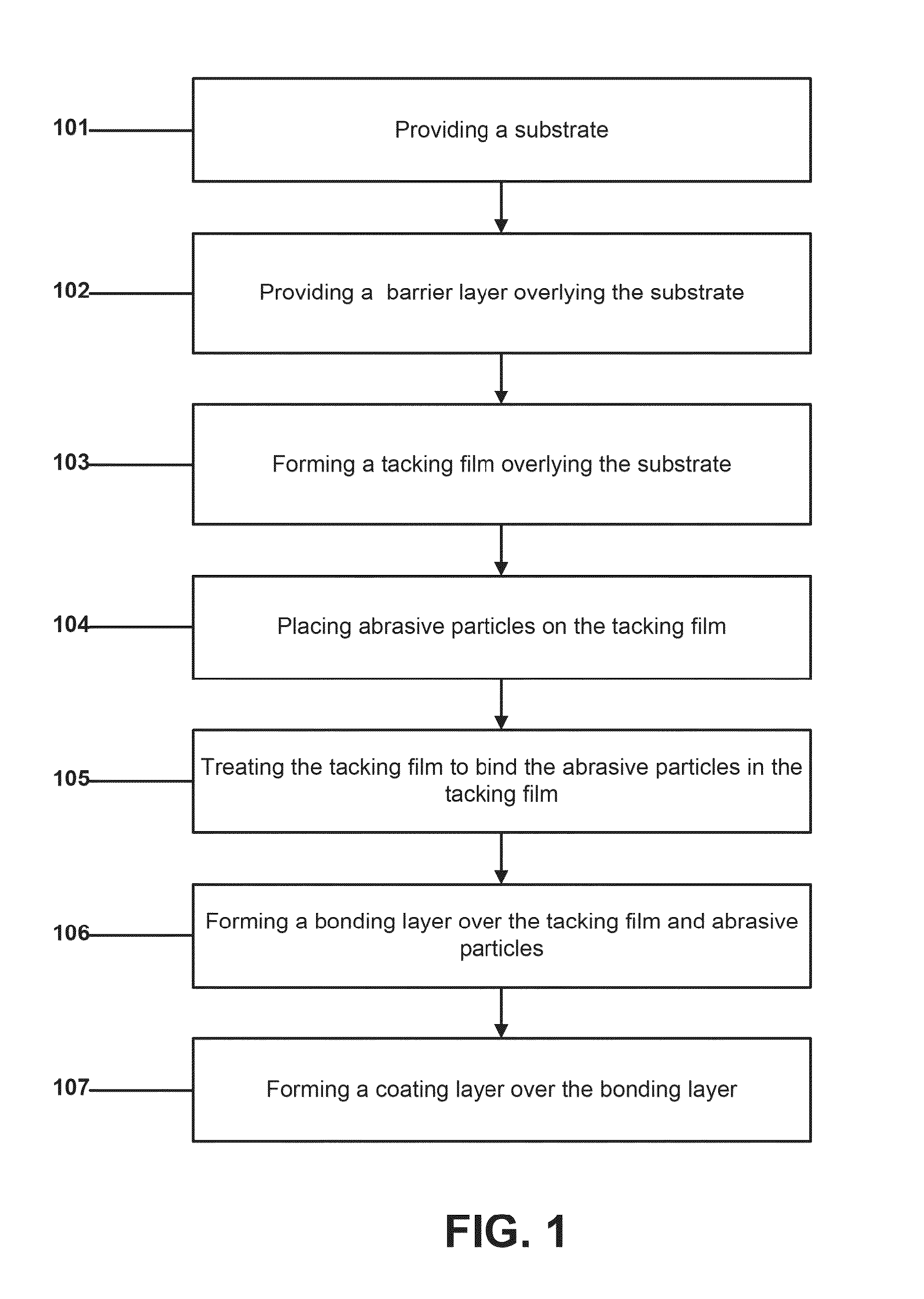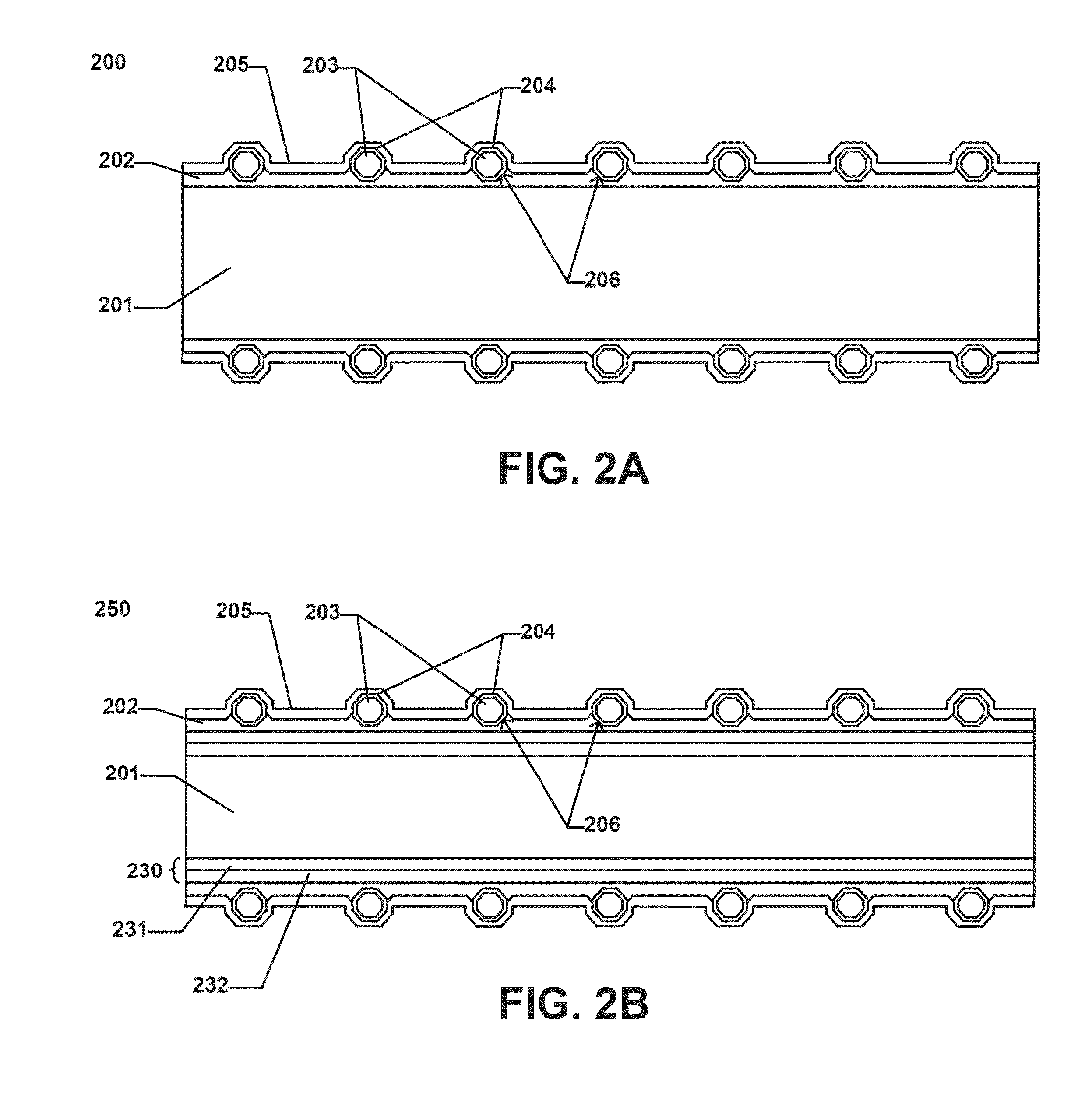Abrasive Article and Method Of Forming
a technology of abrasive articles and abrasives, which is applied in the field of single-layered abrasive articles, can solve the problems of reducing the tensile strength of the wire saw, consuming time and money, and preventing the rapid production of wire saw abrasive tools
- Summary
- Abstract
- Description
- Claims
- Application Information
AI Technical Summary
Benefits of technology
Problems solved by technology
Method used
Image
Examples
example 1
[0250]A length of high strength carbon steel wire is obtained as a substrate. The high strength carbon steel wire has an average diameter of approximately 125 microns. A tacking layer is formed on the external surface of the substrate via electroplating. The electroplating process forms a tacking layer having an average thickness of approximately 4 microns. The tacking layer is formed of a 60 / 40 tin / lead soldering composition.
[0251]After forming the tacking layer, the wire is spooled into a bath containing a liquid flux material commercially available as Stay Clean ® Liquid Soldering Flux from Harris Products Group and the treated wire is then sprayed with nickel-coated diamond abrasive particles having an average particle size of between 20 to 30 microns. Thereafter, the substrate, tacking layer, and abrasive particles are heat treated to a temperature to approximately 190° C. The abrasive pre-form is then cooled and rinsed. The process of bonding the nickel coated diamond to the t...
example 2
[0253]A length of high strength carbon steel wire is obtained as a substrate. The high strength carbon steel wire has an average diameter of approximately 125 microns. A tacking layer is formed on the external surface of the substrate via electroplating. The electroplating process forms a tacking layer having an average thickness of approximately 6 microns. The tacking layer is formed of a 60 / 40 tin / lead soldering composition.
[0254]After forming the tacking layer, the wire is spooled into a bath containing a liquid flux material commercially available as Stay Clean® Liquid Soldering Flux from Harris Products Group and the treated wire is then sprayed with nickel-coated diamond abrasive particles having an average particle size of between 15 to 25 microns. Thereafter, the substrate, tacking layer, and abrasive particles are heat treated to a temperature to approximately 190° C. The abrasive pre-form is then cooled and rinsed. The process of bonding the nickel coated diamond to the ta...
example 4
[0260]A length of high strength carbon steel wire is obtained as a substrate. The high strength carbon steel wire has an average diameter of approximately 120 microns. A tacking layer is formed on the external surface of the substrate via electroplating. The electroplating process forms a tacking layer having an average thickness of approximately 2 microns. The tacking layer is formed of a high purity tin composition (99.9% pure tin).
[0261]After forming the tacking layer, the wire is spooled into a bath containing a liquid flux material commercially available as Stay Clean ® Liquid Soldering Flux from Harris Products Group and nickel-coated diamond abrasive particles having an average particle size of between 10 to20 microns are mixed with the flux. Thereafter, the substrate, tacking layer, and abrasive particles are heat treated to a temperature to approximately 250° C. The abrasive pre-form is then cooled and rinsed. The process of bonding the nickel coated diamond to the tacking ...
PUM
| Property | Measurement | Unit |
|---|---|---|
| melting point | aaaaa | aaaaa |
| particle size | aaaaa | aaaaa |
| grit sizes | aaaaa | aaaaa |
Abstract
Description
Claims
Application Information
 Login to View More
Login to View More - R&D
- Intellectual Property
- Life Sciences
- Materials
- Tech Scout
- Unparalleled Data Quality
- Higher Quality Content
- 60% Fewer Hallucinations
Browse by: Latest US Patents, China's latest patents, Technical Efficacy Thesaurus, Application Domain, Technology Topic, Popular Technical Reports.
© 2025 PatSnap. All rights reserved.Legal|Privacy policy|Modern Slavery Act Transparency Statement|Sitemap|About US| Contact US: help@patsnap.com



